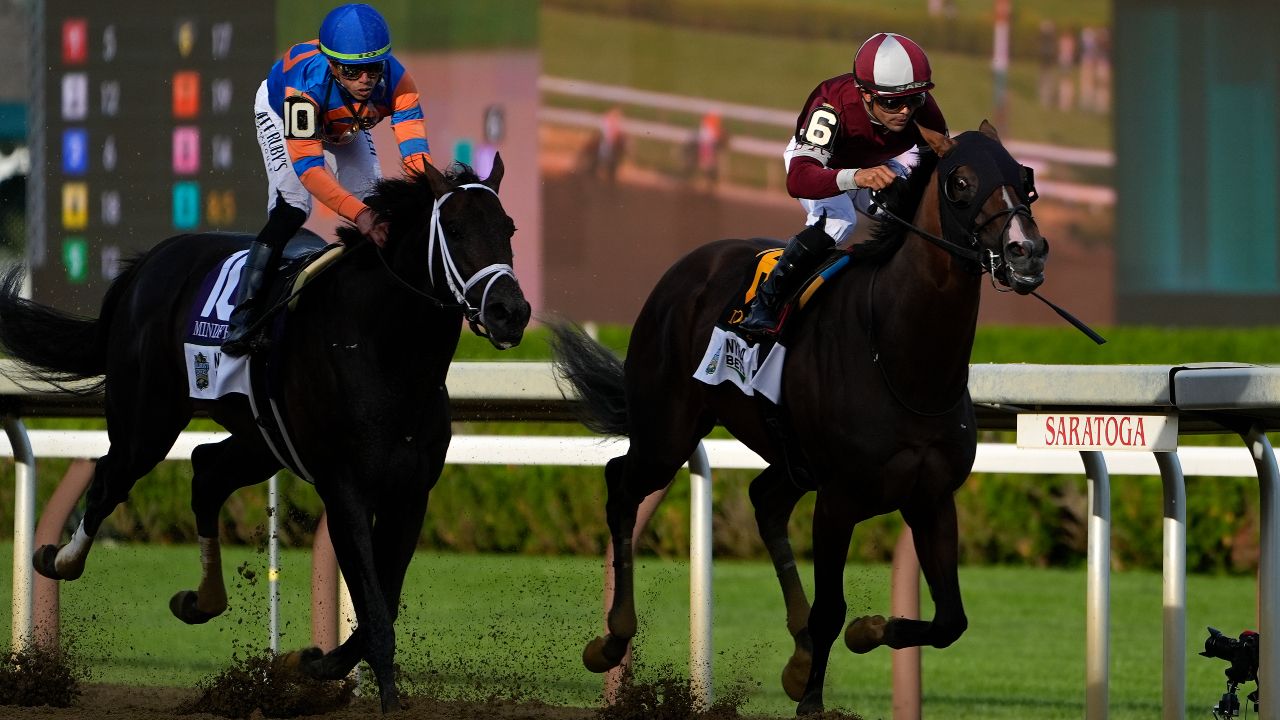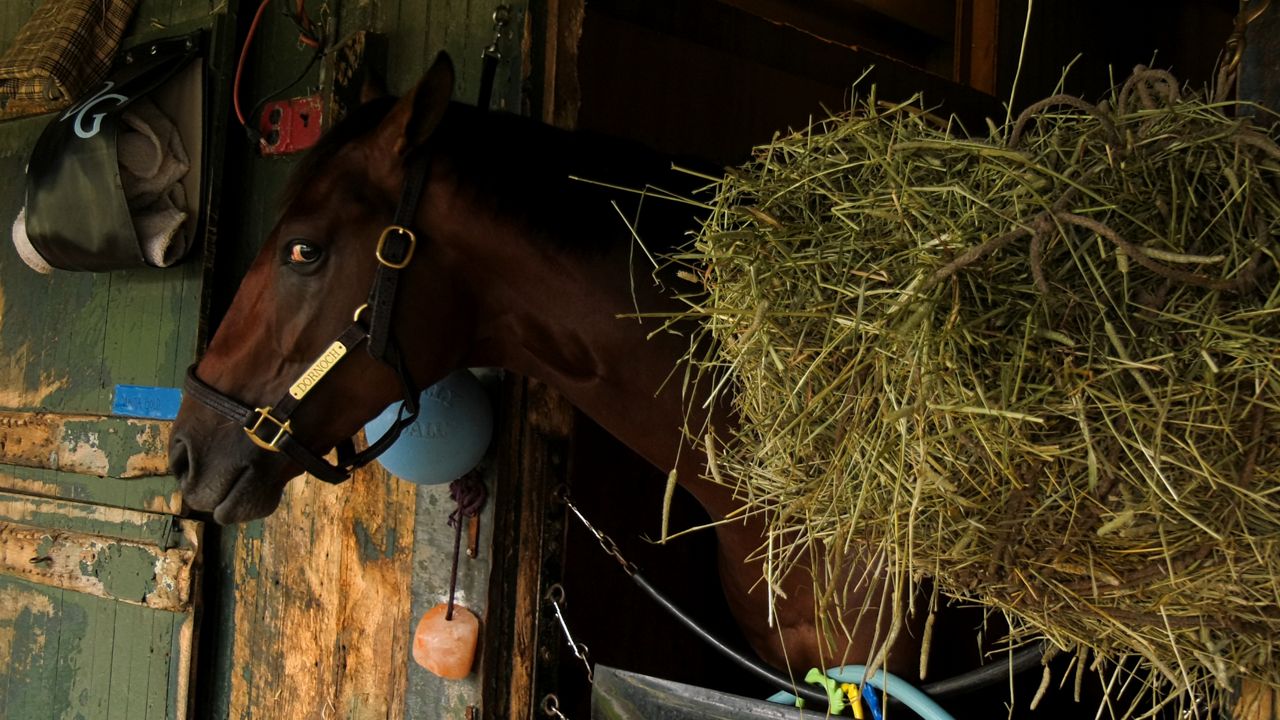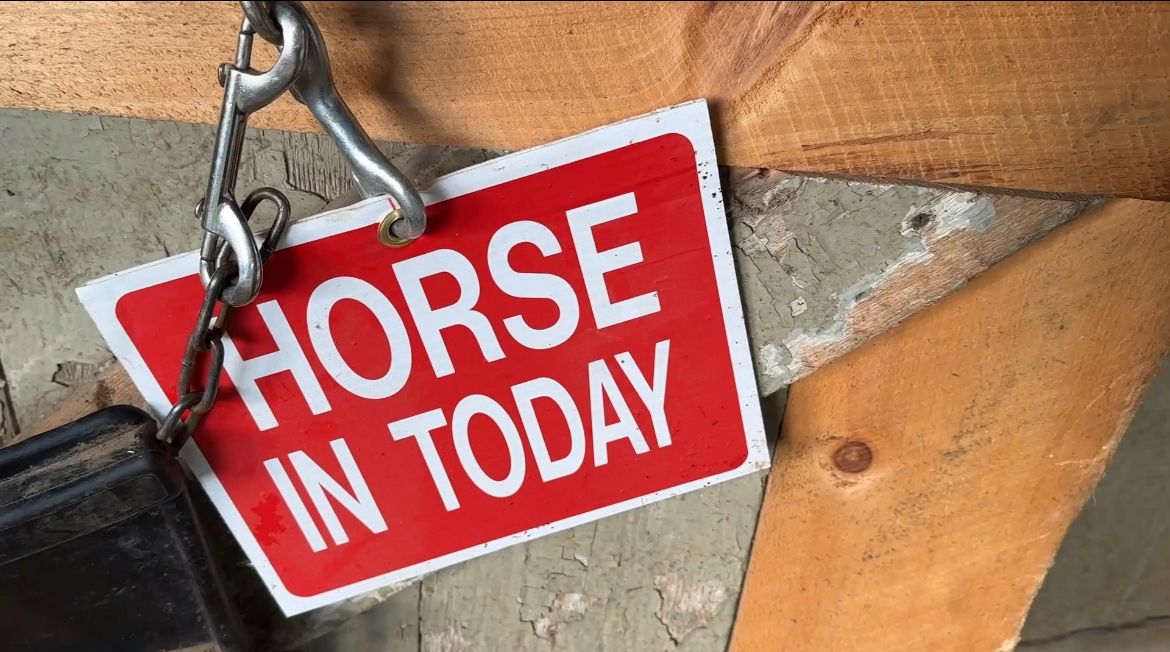For a few minutes, all Dr. Carolyn Cannizzo asked the young racehorse in the stall with her to do was relax.
“I’m just concentrating on the area where he has an injury, getting it from all different angles,” Cannizzo said as she waved a small wand over the animal’s ankle. “It sort of feels like a warm massage to him; most horses enjoy it.”
What You Need To Know
- For the past few years, Dave and Dr. Carolyn Cannizzo have been rehabbing thoroughbreds at Willow Brook Farm
- For almost 15 years, Dave worked as a trainer at racetracks in New York and other states and Carolyn was an on-track veterinarian
- In addition to providing rehabilitation treatment, the Cannizzos’ farm is home to a number of retired horses and a band of broodmares and their foals
An equine veterinarian, Cannizzo was giving the colt laser therapy to treat an injury sustained on the racetrack this past spring.
“It increases circulation; it decreases inflammation; it just helps the body to speed healing,” Cannizzo said.
With her husband Dave, she is working to heal the sprain so the animal can eventually resume his racing career.
“He injured a suspensory ligament, had a little tear in it, so she’s lasering that,” Dave said as he kept the horse still by holding onto its lead shank. “Seven minutes is all it takes every other day for about six to 12 weeks, and you’ll see a lot of healing in that area and regeneration.”
Laser therapy is just one of the many treatments the Cannizzos use to rehabilitate thoroughbreds. Another is acupuncture.
“It stimulates the central nervous system to secrete hormones, such as endorphins, which will help with things like pain,” Carolyn said as she placed four needles in the back of a filly in a stall at the other end of their barn.
Calling it Willow Brook Stables, the Cannizzos’ operation is based on their Saratoga County farm. To build off of Carolyn’s treatments, Dave uses facilities like a training track, indoor arena and a EuroXciser to help horses recover and make it back to their full-time trainers.
“They’ll go in here with no rider. They’ll jog; they’ll walk and go in both directions to get equal muscle use,” Dave said as he stood outside the EuroXciser, which relies on spinning, motorized panels to keep a horse moving without a rider.
More than just a rehab facility, Willow Brook is also a forever home to a number of retired racehorses and a breeding operation with a band of mothers and babies.
“It’s so nice. I love the babies,” Carolyn said as she and her husband watched three pairs of mares and foals gallop in their paddock.
“It’s the best part of the day,” Dave said.
In an industry built around speed, running a farm is a welcome change of pace for the couple. For many years, both were based at the racetrack, where Dave was a successful trainer.
“I love it here. It's much more relaxing and laid back,” Carolyn said.
“At the track there’s a lot of, I don’t want to say drama, but letdown,” Dave said. “At the farm, it’s always a good day.”
Those good days still require constant devotion.
“We’re at it all day,” Dave said. “The racetrack is a lot of work, but the farm is more work.”
For the Cannizzos, helping once injured thoroughbreds return to their winning ways is worth every second.
“When you know you fixed an issue and got it resolved and actually see them go out and compete and win a race, it’s so gratifying knowing your work paid off,” Dave said.
“I think it’s something that, once you experience it and you love the horses, it is with you for life,” Carolyn said.









